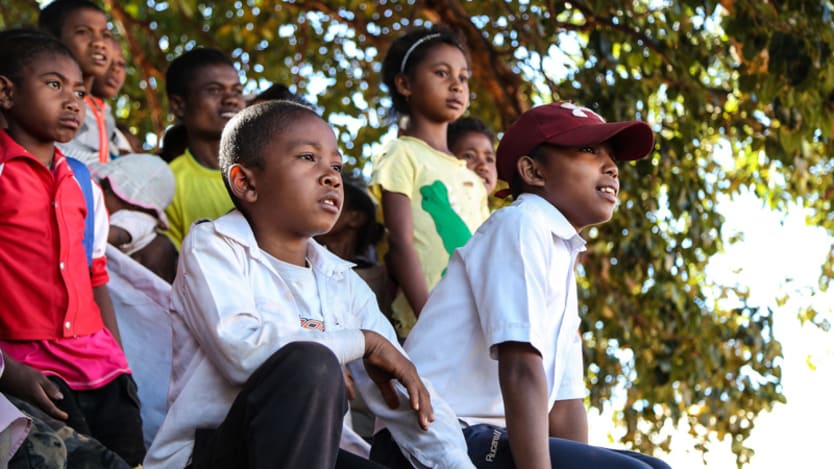
NEW YORK — New breakthroughs may be required to reach the children who continue to lag on health and well-being indicators, Carolyn Miles, president and CEO at Save the Children, told Devex.
“How do we get to those kids that are the furthest behind? That is usually really difficult, more time consuming, more difficult politically, because there is a reason those children are not being reached,” she said during a media briefing ahead of the international NGO’s third annual “Global Childhood Report” release.
“The thing I have seen that has made the biggest difference is the political commitment of the government.”
— Carolyn Miles, president and CEO, Save the ChildrenMiles pointed to the example of accessing the estimated 5.2 million kids who died in 2016 under the age of 5. In 2000, 12 million children died under the age of 5, according to the report released Tuesday, May 28.
“To get to that 5.2 million, those are the toughest children to reach, so that will be a challenge over the next 15 years,” she explained.
In the meantime, at least 280 million children are living healthier, safer lives than they have at any other time in the last two decades, the report finds.
Child hunger threatens Africa's economy, report says
Africa is the only region of the world where the number of stunted children is rising, costing countries as much of 17% of their GDP, according to a report from the Africa Child Policy Forum.
Children globally are more likely to live past the age of 5 and attend school and are less likely to participate in the workforce and experience malnutrition or stunting. But the trajectory is quite different for children living in war zones, as the number of children in conflict has skyrocketed since 2000, according to the report.
The report documents that global aid, social investments, technology developments, and an increase in female leadership have helped improve the overall situation for children in 173 out of 176 countries since 2000.
All but three countries — Trinidad and Tobago, Venezuela, and Syria — made progress on eight development indicators of child deaths, stunting, primary education, child laborers, child marriage, adolescent births, and child homicides. Some countries, like Yemen, did not have enough available data to be featured in the index.
“Not all countries made progress on all eight indicators and there was backsliding on all of these. If you get down to the level of granularity where you are looking from country to country, you can see some problems are far more intractable than others,” said Beryl Levinger, the research director for the report.
“So we now know, quite well, how to deal with stunting and schools. We know less well how to prevent child homicide. There is progress, broadly speaking, but not in each country.”
There has been only fair and uneven progress on reducing the number of teenage girls who become mothers, with a drop of just 3 million fewer teen births today than there were in 2000, which recorded 16 million teen mothers. There are only 12,000 fewer children murdered per year, resulting in 85,000 children killed in 2016, the report says.
And roughly 1 in 5 children worldwide were living within 50 kilometers of a conflict incident in 2017, more than double the number in 1995.
“What is the recipe for ending children killing children, or adults killing children? It is many, many factors. It is a very different kind of problem with its level of complexity than how do you reduce under-5 mortality,” Levinger said. “The more complex, the more factors are involved in explaining the phenomenon, the slower the progress. If it is a question of delivering a very specific target and intervention, progress is happening relatively quickly.”
The problem of displacement and conflict, meanwhile, are less likely to resolve themselves with the same degree of progress that child malnutrition and stunting have seen.
The report calls for an increase in investments for excluded children, the end of discriminatory policies that could prevent girls from attending school, for example, and for better quality data collection on children.
“The thing I have seen that has made the biggest difference is the political commitment of the government, saying, ‘Children do not have to die, we should make sure our girls do not get married under the age of 15,’” Miles said.




